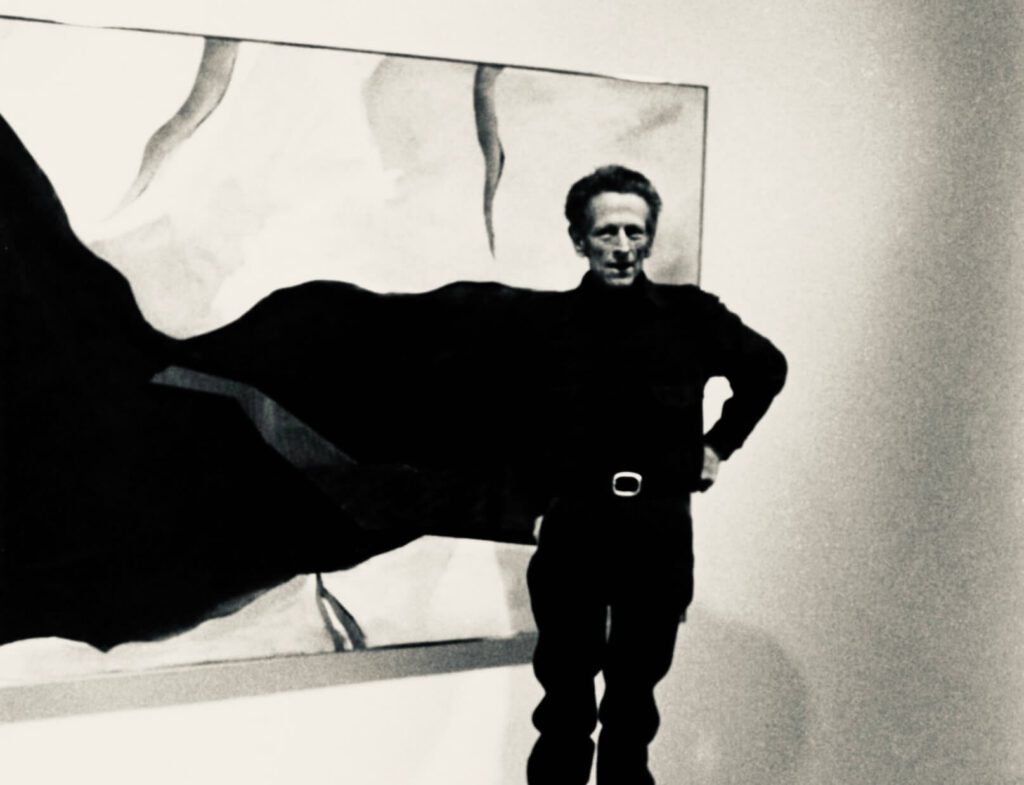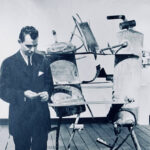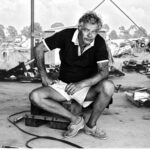David Hare
David Hare (1917-1992) was an influential American artist known for his contributions to Surrealism and Abstract Expressionism through his innovative sculptures, paintings, and photographs. His work is characterized by a deep engagement with form, material, and the unconscious, making him a unique and pivotal figure in mid-20th-century American art.

Early Life and Education
David Hare was born on March 10, 1917, in New York City. He grew up in an intellectually stimulating environment; his father, Nathan Hare, was a prominent surgeon and his mother, Esther B. Hare, was a painter. This combination of scientific and artistic influences would later inform his multifaceted approach to art.
Hare initially pursued a degree in biology at Harvard University, reflecting his early interest in the sciences. However, he soon realized that his true passion lay in the arts, prompting him to leave Harvard and study at the Art Students League of New York. There, he was exposed to various artistic techniques and philosophies, which broadened his understanding of art and its potential.
Introduction to Surrealism
In the late 1930s, Hare began to explore photography, which became a significant medium for him. His photographic work caught the attention of prominent art critics and led to his inclusion in several exhibitions. During this period, he was introduced to Surrealism, a movement that would profoundly influence his artistic direction.
In 1940, Hare met Marcel Duchamp, one of the leading figures of Surrealism. Duchamp introduced him to other key members of the movement, including André Breton, Max Ernst, and Yves Tanguy. This association with the Surrealists inspired Hare to delve deeper into themes of the unconscious, dreams, and the irrational, which became central to his work.
Development of Sculptural Style
Hare’s transition from photography to sculpture marked a significant turning point in his career. He began experimenting with various materials, including metal, wood, and found objects, to create works that embodied the principles of Surrealism. His sculptures often featured biomorphic forms and abstract shapes, reflecting his interest in organic structures and the natural world.
One of Hare’s early notable sculptures is “Rooko” (1944), a surreal, abstract piece that exemplifies his unique approach to form and material. The work is composed of various elements that seem to merge and interact, creating a sense of movement and transformation. This piece, along with others from this period, established Hare as a prominent figure in the American Surrealist movement.
Key Artworks and Exhibitions
Hare’s reputation as a leading Surrealist sculptor continued to grow throughout the 1940s and 1950s. He participated in several important exhibitions, including the landmark 1942 exhibition “First Papers of Surrealism” in New York, organized by Marcel Duchamp and André Breton. This exhibition was instrumental in introducing Surrealism to a wider American audience and solidifying Hare’s position within the movement.
“Figure in a Field” (1951)
One of Hare’s most significant works from this period is “Figure in a Field” (1951). This sculpture exemplifies his mastery of form and his ability to convey complex emotions and ideas through abstract shapes.
“Figure in a Field” is a large, outdoor sculpture made from welded steel. The piece features an abstract figure that appears to be emerging from or merging with the surrounding environment. The figure’s form is both organic and geometric, creating a sense of tension and harmony. The use of steel gives the sculpture a sense of permanence and solidity, while the abstract shapes convey a feeling of fluidity and movement.
The title “Figure in a Field” suggests a connection to the natural world and the human condition. The sculpture’s abstract form invites viewers to interpret it in various ways, reflecting Hare’s interest in the unconscious and the transformative power of art. This work is a testament to Hare’s ability to create sculptures that are both visually striking and intellectually engaging.
Transition to Abstract Expressionism
In the late 1940s and early 1950s, Hare began to move away from Surrealism and towards Abstract Expressionism, a movement that emphasized spontaneous, gestural brushstrokes and the exploration of inner emotions. His involvement with the New York School of Abstract Expressionists, which included artists like Jackson Pollock, Willem de Kooning, and Mark Rothko, influenced this transition.
Hare’s Abstract Expressionist paintings and sculptures are characterized by their bold, dynamic compositions and a focus on the process of creation. He often used unconventional materials and techniques, pushing the boundaries of traditional artistic practices. His work from this period reflects a deep engagement with the physicality of the medium and the expressive potential of abstract forms.
Important Artwork: “The Figure 4” (1959)
One of David Hare’s most important works from his Abstract Expressionist period is “The Figure 4” (1959). This sculpture highlights his innovative use of materials and his ability to convey complex ideas through abstract forms.
“The Figure 4” (1959)
“The Figure 4” is a large-scale, mixed-media sculpture that combines elements of painting and sculpture. The piece features a central abstract figure made from welded steel and found objects, surrounded by a dynamic arrangement of painted panels and geometric shapes. The use of mixed media allows Hare to create a multidimensional composition that engages viewers from multiple perspectives.
The central figure in “The Figure 4” is both abstract and anthropomorphic, suggesting a human presence while remaining open to interpretation. The surrounding elements create a sense of movement and interaction, reflecting Hare’s interest in the relationship between form and space. The bold use of color and texture adds to the sculpture’s visual impact, making it a compelling example of Hare’s Abstract Expressionist work.
“The Figure 4” embodies Hare’s ability to blend different artistic techniques and materials to create a cohesive and evocative composition. The work reflects his ongoing exploration of the unconscious and the expressive potential of abstract forms, making it a key piece in his oeuvre.
Later Career and Legacy
In the 1960s and 1970s, Hare continued to experiment with new materials and techniques, expanding his artistic practice to include large-scale public sculptures and installations. He also became increasingly involved in teaching, serving as a professor at several institutions, including the University of Maryland and the Pratt Institute. His influence as a teacher and mentor helped shape the careers of many young artists.
Hare’s work has been exhibited in numerous solo and group exhibitions, both during his lifetime and posthumously. Major museums and galleries around the world, including the Museum of Modern Art in New York, the Whitney Museum of American Art, and the Tate Gallery in London, have included his work in their collections. His contributions to both Surrealism and Abstract Expressionism have been recognized and celebrated by art historians and critics alike.
Personal Life and Philosophy
David Hare was married twice and had three children. His personal life was deeply intertwined with his artistic practice, and he often drew inspiration from his experiences and relationships. He was known for his intellectual curiosity and his interest in a wide range of subjects, from philosophy and literature to science and technology.
Hare’s philosophy of art was rooted in a belief in the transformative power of creativity. He saw art as a means of exploring the unconscious and revealing deeper truths about the human condition. His work reflects a constant search for new ways of seeing and understanding the world, and a commitment to pushing the boundaries of artistic expression.
Conclusion
David Hare’s artistic journey is a testament to his dedication to exploring the depths of abstraction and the unconscious. Through his innovative sculptures, paintings, and photographs, Hare pushed the boundaries of Surrealism and Abstract Expressionism, leaving a lasting impact on the history of modern art. His notable work, “The Figure 4,” exemplifies his mastery of form, material, and composition, highlighting his unique approach to abstract art.
In celebrating David Hare’s life and work, we recognize his significant contributions to the development of 20th-century art and his enduring legacy as a pioneer of abstract expression and surrealist vision. His work continues to inspire and captivate, reminding us of the power of art to evoke profound emotions and transform our understanding of the world.



